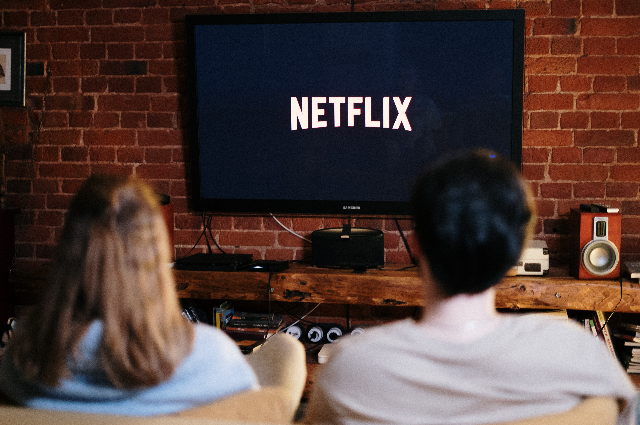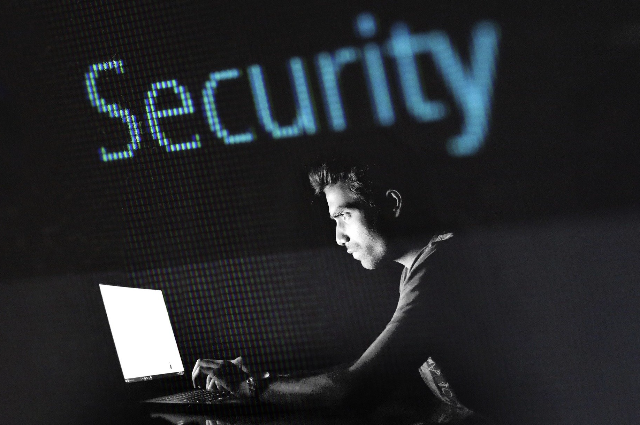
Image by Gerd Altmann from Pixabay
Introduction:
The Government of India brought out major and drastic changes in Section 79 of the Information Technology Act, 2000 through the Information Technology (Intermediary Guidelines and Digital Media Ethics Code) Rules, 2021 on 21 February 2021. These Rules came partly in the backdrop of the then Minister of Law& Justice and Information Technology, Mr. Ravi Shankar Prasad's accusation that social media platform, Twitter was adopting double standards on the incidents of the Red Fort on Independence Day this year and the Capitol Hill in the United States. Besides, the growing realisation of the enormous power wielded by Big Tech was also a catalytic factor. It may be worth mentioning in this context that in the U.S.A., a shield has been provided to social media platforms under Section 230 of the Communications Decency Act. Under this Section, legal immunity has been provided to internet companies for the content shared on their websites. In a way, the present Rules seem to be a repudiation of that shield provided by U.S. law. Even the Supreme Court of India has taken cognizance of the role of social media by observing in the Tablighi jamaat case in October 2020 that news channels have misused the right to free speech. The then Chief Justice of India, S.A. Bobde had further asked the Centre to explain if it had taken any steps to curb the trend.
The Supreme Court in another case stated that some of these over-the-top (OTT) channels show pornography. The Court emphasized the need for regulations of OTT service providers such as Netflix and Amazon Prime Video in absence of proper oversight. The Court was hearing a pre-arrest bail plea by Amazon Prime's content chief Aparna Purohit in March 2021.
Contents of the Guidelines and the Rules:
The revised guidelines have expanded the definition of digital media. Now, such news media portals are mandated to follow similar norms that govern the traditional media publishers like newspapers and television news channels. Under these guidelines, it has been sought to ensure that media companies are more accountable for the content displayed on their platforms. They are also required to follow local laws and government orders. A number of such companies having a large userbase have to set up necessarily offices in India with locally appointed officers who will be responsible for attending to requests ranging from traceability of messages to taking down content. These companies will also have to set up automated tools in order to eradicate certain kinds of messages. They will delete messages upon requests from users within 24 hours if the content is of sexual import. Besides that, social media platforms have been mandated to take down flagged posts within 36 hours of receiving notice.
The encrypted messaging apps, such as WhatsApp, Signal, and Telegram will have to trace the originator of contentious messages. Further, they are required to also introduce a mechanism for voluntary verification of age and identity of users as a means to curb fake and anonymous social media posts. Apart from the appointment of compliance and grievance officers, the new guidelines mandate the social media and global internet giant companies not withhold information on the source of unlawful and inflammatory messaging beyond 72 hours.
Platforms like Netflix, Disney Hotstar, and Amazon Prime are now required to provide age-related classifications as part of the rules. The content will be divided into five categories- suitable for universal (U) viewing, for ages 7 and above (U/A 7+), 13 and above (U/A 13+), 16 and above (U/A 16+), and adult (A). The social media companies having more registered users than the threshold notified by the government shall come into the category of "significant" social media intermediaries. These are some of the significant provisions of this new Guidelines and Rules, 2021.

Criticisms:
Questions have been raised by experts on whether digital news can be regulated by the Information Technology Act, 2000. The Government has thus formulated rules on a subject that is not governed under the IT Act. It is not clear whether the IT Act would be the correct legislation for framing rules to regulate digital news media and O.T.T. platforms. These are the two kinds of stakeholders intended to be covered under this guideline beyond the traditional intermediaries. This will have a bearing on the freedom of speech and expression provided in Part III of the Indian Constitution.
- No consultations have taken place with digital news media before the issuance of the Guidelines, 2021.
- As per critics, the most concerning part of the changes envisaged in the Guidelines is its emphasis on "traceability". The new rules provide for the identification of the originator of messages in the form of an obligation on the social media intermediaries. This may culminate in impacting the privacy rights of a large number of Indian citizens as it will result in the dilution of the protection afforded by end-to-end encryption.
- This is yet another example of policymaking in an undemocratic manner.
- While the need for oversight and accountability is desirable from the point of view of every internet user from big tech companies like Facebook, Twitter, etc., it should not come at the cost of increasing political control, stifling the people's voices online, and affecting their right to privacy.
Regarding the first criticism about the tenability of these guidelines and rules in the context of the intermingling of digital and print media under one umbrella of law, only the superior courts will have the last word. Since a number of petitions have been lying with the High Courts and the Supreme Court, one has to wait only for their verdict. As far as the points of the absence of proper legislation and public consultation are concerned, it can be asserted safely that unless these guidelines and rules are bereft of proper legislative backing, they are liable to be challenged in the courts on various grounds. A necessary amendment accordingly in the Information Technology Act, 2000 has to be ensured by the Central Government to do away with any further litigation. Moreover, it will provide more teeth to the authorities at the implementation level. In doing so, proper and time-bound consultation with all stakeholders is a must. In a democracy, constant dialogue with the public, in general, is a necessity that cannot be ignored by any government. This should be taken care of in making such type of regulatory rules having wide import throughout the country. Thus, these rules suffer from this infirmity if this has not been done by the government.
The third criticism regarding the traceability of the originator of unwanted posts is not justifiable on the ground of violation of privacy rights. End-to-end encryption is a special facility ingrained in apps like WhatsApp, Signal, and Telegram. This ensures the privacy of the users to a great extent. However, at the same time, this facility is being widely misused by terrorists and anti-social elements. Their posts frequently create unrest and disenchantment in society. One such post is originated from such anti-social elements which are blindly forwarded by others causing disruption in the society. Therefore, in limited cases where national security or the general peace and tranquillity existing in the society is concerned, there is no harm in breaking the web of encryption by such social media intermediaries. Such obnoxious and anti-social elements should be exposed in the larger interest of the society and the country.

The concept of privacy rights does not come into play in these matters. Here, it is to be borne into mind that in India, the fundamental right to privacy is not an absolute right. There are reasonable restrictions attached to it that take care of the larger national interest and that of the society. Hence, where the contents posted on such media platforms are inimical to the nation's security and the society's general well-being, the plea of violation of the right to privacy holds no water. In this context, it is to be noted here that in the entertainment industry, mainly in the films and shows displayed on the digital platforms and the Over-the-top (OTT), no censorship exists as of today. As a result, a flurry of obscene and violent material is being dished out to the viewers with no restraint. This is affecting the mental health of the people at large. Again, in this case, also, the plea of privacy rights is meaningless. This does not imply that anybody is entitled to watch porn or other objectionable material in his privacy because that may affect not his thought process only, but the society to a large extent later. The role of governments naturally comes into play in such situations.
It is the duty of the government to see that the better health of the society as a whole, remains unperturbed. Consequently, the social media intermediaries' argument about the holiness of encryption policy is totally untenable where the national and societal interests are ignored or taken lightly. The other argument about making such laws in a democratic way is not only desirable but must be ensured by the governments. For this more dialogue and discussion with the stakeholders is a necessity. While amending the Information Technology Act, 2000, this should be ensured by all means.
Lastly, these Guidelines and the Rules should not lead to more and more political control. For this, the incorporation of independent oversight is the most important requirement. Considering the sensitivity of the matter, any user's complaint regarding the violation of his privacy rights or any other general complaint regarding the violation of norms by the digital or other intermediaries must be examined by an independent oversight which would be helpful in maintaining public trust in the system. The government may appoint retired Judges of the higher courts for this job. These guidelines suffer from this defect also.
Conclusion:
The said Guidelines and the Rules are necessary to control the menace caused by digital platforms and other media. Particularly, in the case of digital media, there was no effective means to check the obnoxious content proliferating day by day loaded by unscrupulous and anti-social elements. With the proper application of these rules, this lacuna has been filled up to a certain extent. However, the Supreme Court while hearing a petition filed by Amazon Prime Video some time ago, has observed that the new rules to regulate OTT platforms "lack teeth".3 But despite the shortcomings mentioned above, a beginning has been made to exercise the necessary control in the general public interest of the country when required. The next step should be to bring suitable changes in the Information Technology Act, 2000 to provide strength to these Rules.
. . .
References:
- Samanwaya Rautray, Channels Misusing Free Speech: Chief Justice of India, October 9, 2020.
- Utkarsh Anand, OTT regulations a necessity as some even show porn: SC, March 5, 2021.
- Krishnadas Rajagopal, SC says new rules to regulate OTT platforms lack teeth, March 6, 2021.
